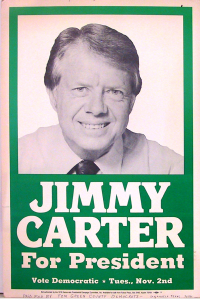 If Trumpcare passes, and if it’s implemented, it will bankrupt the American health system.
If Trumpcare passes, and if it’s implemented, it will bankrupt the American health system.
I don’t know that its advocates care about this, but let’s go back to 2010 to learn why this is so.
The Affordable Care Act is a huge subsidy to the insurance industry. It takes high-cost risks – poor people, old people, veterans – out of the private insurance system, leaving companies like United Healthcare only with relatively young, working, healthy people, and their kids, insuring people with jobs and employers who can afford the premiums
 Trumpcare reverses this. It cuts Medicaid, meaning more poor people will wait for primary care or get it only at high-cost emergency rooms. It cuts Medicare, meaning older folks pay skyrocketing costs to cover ongoing costs or follow the poor to the ER.
Trumpcare reverses this. It cuts Medicaid, meaning more poor people will wait for primary care or get it only at high-cost emergency rooms. It cuts Medicare, meaning older folks pay skyrocketing costs to cover ongoing costs or follow the poor to the ER.
What happens when all millions of poor people hit the emergency rooms again? The same thing that happened last time, the same thing that caused the ACA to be passed in the first place. Insurance rates for the rest of the market skyrocket to compensate for the fact that acute care costs so much more than preventive care.
This is the key with getting poor people, and the near-poor, insurance. It is not just a huge subsidy to insurers. It gets these people primary care. Poor people are more likely to have high-cost chronic conditions like diabetes and heart disease than rich people. They’re more likely to have bad habits like smoking, overeating, and sedentary lifestyles than non-poor people, conditions that lead to these chronic conditions. These are conditions best managed through primary care, not specialty care.
You take away their primary care and millions of people are going to get sick. It costs a lot more to treat someone who is sick than to treat them when they’re well, just as you’re less likely to have your car’s engine fail if you change the oil and get it serviced as recommended.
We know all this because this is what was happening when the ACA was passed.
The U.S. pays more of its gross domestic product for health care, about 17.5%, than any other country. By a wide margin. This is a huge drain on our competitiveness. Yuge. Our businesses are paying more to cover their own workers than employers anywhere else. At the same time, we still have 10 million uninsured, raising costs further.
 There were lots of other provisions in the ACA, besides covering more people, which helped it bend the cost curve, reducing the growth of medical care spending. The ACA included huge subsidies for health IT equipment, meaning fewer errors from bad handwriting, more information for doctors at the point of care, and actual communication between doctors and patients between office visits.
There were lots of other provisions in the ACA, besides covering more people, which helped it bend the cost curve, reducing the growth of medical care spending. The ACA included huge subsidies for health IT equipment, meaning fewer errors from bad handwriting, more information for doctors at the point of care, and actual communication between doctors and patients between office visits.
The ACA was saving billions from the costs of Medicare, and billions from the costs of Medicare. Those costs are now supposed to go back on the private system. Skyrocketing premiums will cause more employers to withdraw coverage, either by paying the ACA’s fines or (Republicans hope) by buying “no-care” policies through whichever state allows them. We know that No Care is coming from the provision of “competition across state lines” because we saw what happened when banks began to credit cards nationwide. They all moved to South Dakota, which repealed its usury laws. The costs of borrowing skyrocketed. They haven’t come down since.
What happens when you allow cross-state competition? Any one state, and South Dakota could be the one, allows insurers who locate offices there to write policies that don’t really cover anything. We’re already seeing this trend with so-called “catastrophic policies,” which place the costs of sickness, except for catastrophic illnesses like cancer, onto the insured. When Trumpcare advocates talk about Obamacare bankrupting patients they are talking about this type of policy. Democrats didn’t allow this because we’re heartless. We put it in to get the votes needed to pass a bill over the objections of our own neo-Republicans.
GOP front groups are claiming that Trumpcare will increase employment, leading to more jobs and an economic stimulus. Even that’s bogus, in an economy with 4.7% employment. When labor markets are tight, people do get more money. But in the process American businesses become less competitive in global markets. The front groups are lying.
 We return in the end to something I have written repeatedly in the last few months. The proof of the pudding in Donald Trump is in the eating. He will get his policies through, he has the majorities and party unity needed to do that. But when you enforce bad policies, you create a huge backlash.
We return in the end to something I have written repeatedly in the last few months. The proof of the pudding in Donald Trump is in the eating. He will get his policies through, he has the majorities and party unity needed to do that. But when you enforce bad policies, you create a huge backlash.
If technology will just do the non-partisan job of finding missing voters and financially supporting their registration, the Republican Party by 2021 will be dead. Many Democrats insist that Trump and the Republicans will find ways to steal future elections, to turn America into a dictatorship along the lines of Nazi Germany.
If Trump crosses that bridge, America will suffer. But America will triumph, even if out of the ashes, because democracy is an idea that will not die. It is long-past time for Democrats to admit that, to proclaim that, and to work toward that, rather than whining over every daily outrage.
The whining is the only thing keeping Trump and the GOP alive.









